|
June 24, 2012
|
White Mountains are, New Hampshire
|
What an amazing find! Actually, Arthur Haines found this before it flowered while
he was teaching a class. When I was back in the area, I looked to see what it had turned
into. At first I wasn’t sure that it was a Evening Primrose genus (Oenothera),
so I went through the Onagraceae (Evening Primrose family) key:
- Calyx and Corolla has 4 to 6 petals.
- 8 stamen.
- Flowers zygomorphic, the petals all oriented toward one side of the flower. I was told by
Arthur Haines to also notice that the stamen in this case are oriented toward one side of the
flower. Genus: Oenothera
- Flowers zygomorphic.
- Petals 6-15 mm long. Anthers 1.5-5 mm long.
Once I was this far along in the key, I had to decide between Biennial Bee-Blossom (Oenothera
gaura) and Longflower Bee-Blossom (Oenothera filiformis, Gaura biennis var. pitcheri,
Guara longiflora). This was a very difficult task relying on my pictures only (since it is
a 2-1/2 drive to the flower). The stem and inflorescence of Biennial Bee-Blossom are densely
villous (long, soft, bent hairs, not tangled). The backs of the leaves are short-villous along
the margins. On the other hand, Longflower Bee-Blossom stems and inflorescence are densely
strigulose (tiny straight, stiff, sharp and appressed hairs). Looking at the closeup pictures
towards the bottom of the table below, I came to the conclusion that most of the hairs are
villous and therefore the plant is Biennial Bee-Blossom. It is a very rare plant in Eastern
New England.
|
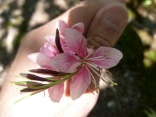
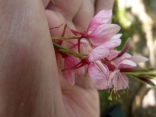
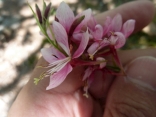

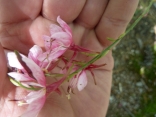

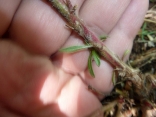
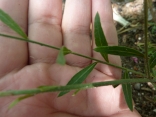
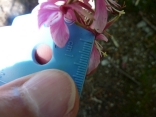
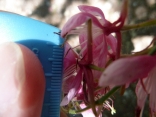
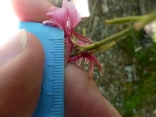
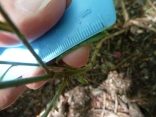
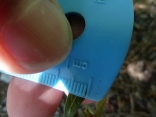
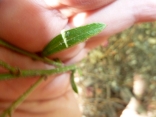
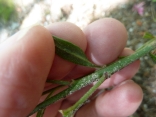
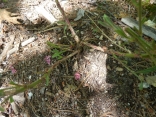
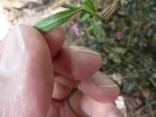
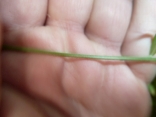
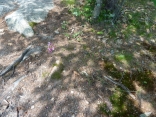
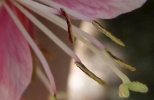



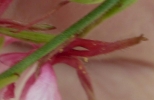

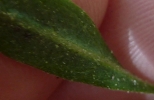
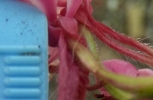
|


























